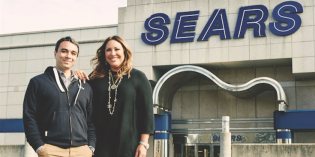If you were to look up “viral marketing” in a textbook, you should find pictures of someone in a chicken costume doing a handstand or breakdancing. “Subservient Chicken” was the first viral sensation, and The Barbarian Group created it for Burger King.
Benjamin Palmer, CEO and chief creative officer of the New York-based creative agency, is a keynote speaker at Dx3 in Toronto. In the lead-up to the event, which takes place March 6 and 7, Palmer spoke with Marketing about today’s “always-on” world and how brands should be interacting with consumers in the digital space.
Brands are using social media to have real-time, two-way conversations with consumers. What does it take for them to do a good job of that?
I think they have to look inward a little bit and stop asking people to just like them. That’s a pretty rude thing to do: “Just come like my page.” Put out some content or an experience that’s worth liking. If you’re a billion-dollar company you can’t just tweet like everybody else; you have to put some effort into it. We do an Instagram feed for General Electric that’s the second-most popular brand Instagram feed after Red Bull, so we have 130,000 followers or something.
What do you produce for that feed?
We go and do photo shoots just for Instagram. But you can tell we’re putting energy into it. They’re composed to look good on your phone and cropped square. We get really great photographers that have an internet following, like Noah Kalina [who takes daily pictures of himself and got more than 24 million YouTube views as a result of the first six years of his ongoing project], and he takes cool pictures of an aircraft engine so you can see all the guts.
One of the things your company asks with its work is “Will the internet like this?” Outside of your own work, what have you seen recently that the internet seems to like?
I think the internet likes things that people can take and make their own. I think the internet really likes “The Most Interesting Man in the World,” that Dos Equis thing. As a very traditional advertising example, they’re good ads, but the internet likes them because you can take the cadence of the writing and do your own versions. I would say half of the success of the campaign is it’s a thing that people can make their own memes of. And it probably never would have worked if they made “The Official Dos Equis Make Your Own Interesting Man Meme.” That would have fallen flat.
There are a lot of cool technologies out there that can help marketers with more creative storytelling. Which ones excite you right now?
We’re having a fun time with Vine for a few clients. The really interesting thing about it is, unlike Instagram [where] you can use a really nice camera and load the picture up into your phone and post it from there, with Vine you have to film with the iPhone. So you can’t shoot it and edit it and take your TV ad and put six seconds of it on Vine. You actually have to shoot it with the app in the camera. So we’re doing this pretty hilarious stuff like putting lenses and a crazy camera rig on iPhones so we can get a more cinematic experience or do some motion control.
Have any other new technologies caught your attention recently?
We’re playing around with Twine. It’s this little box that has a few different sensors—like a motion and tilt sensor—and hooks up to a wifi network and sends you alerts. So a simple notion is you put a magnetic sensor on a cookie jar and plug it into the box, then every time your kids opens the cookie jar it’ll send you a text message. Or if your basement floods, it’ll tweet. You can do fun stuff, you can do useful stuff. Physical computing and the “internet of things” is a big thing that’s coming, and there’s a lot of stuff that maybe a year ago would be impossible or extremely expensive that’s all of a sudden going to get very, very cheap. Your shoes could be on the internet in a couple years… It’s going to get weird.










